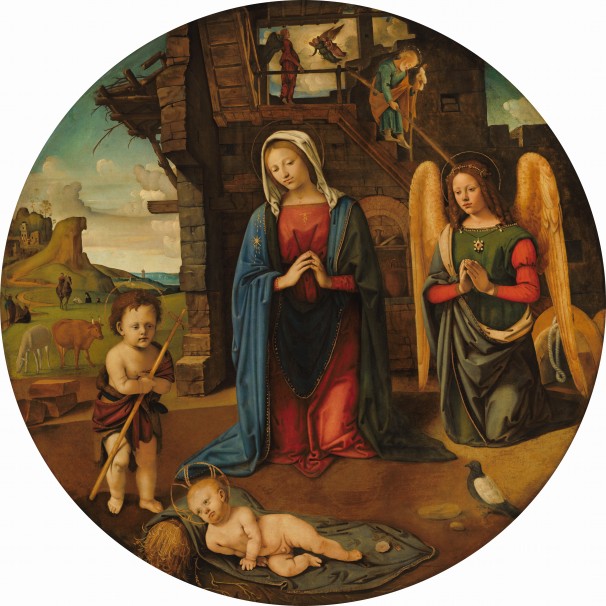
To project the artwork onto a smartboard click here.
Piero di Cosimo is one of the most interesting artists of the Renaissance. His biographer was Giorgio Vasari, the contemporary of Michelangelo who is considered to be the first art historian. Vasari collected stories about the most famous and popular artists from the Renaissance, and his book, The Lives of the Artists, became a bestseller. His narratives are full of personal remarks, perhaps based on hearsay and his own judgment, on the character of both the art and artists themselves. With that as the basis, we come to know Piero di Cosimo as a true eccentric. He had unusual habits and phobias that often kept him in seclusion. According to Vasari, he was deathly afraid of thunderstorms and fire, lived on a diet of hard-boiled eggs, and never cleaned his studio. He also had a deep love of nature, which usually showed in his painting of trees, rocks, animals, and the natural world. Despite his apparent eccentricities (if Vasari’s narrative is true), Piero accomplished a remarkable body of work, including this beautiful scene of the Nativity.
The Nativity with the Infant St. John is a tondo painting—one that is circular in shape, which was popularized in the Renaissance. While the subjects varied, the tondo sometimes functioned as a gift to celebrate a successful birth, called a desco da parto or “birth tray.” During the postpartum period a mother would receive limited guests, usually only females and family, and gifts and refreshment would be served from such an image framed and functioning as a tray. But the practical function was ritualistic only at first; later, the object would be hung as a framed work of art. A repeating iconographic subject for such a desco da parto was the birth of a saint, or as in the case here, the Nativity of Our Lord.
It is important to consider that the circular image would offer the artist the opportunity (or challenge) to compose “in the round.” If we consider the rose window in the Gothic Period as an immensely successful expression of circular composing, the relative flatness of a window permits the designer to think largely in two dimensions. But when an artist must conceive of the wholeness of three dimensions, the challenge increases. In a rose window, the form is of a flower or a wheel—petals or spokes radiating outward from a center ovule or hub. But in a painting of a landscape with human figures, how can an artist make a convincing picture and still get the sense that the circle’s form is important to the image and the image is important to the circle?
Circles are “perfect”; circles have no beginning or end—they are continuous with no parts or characteristics that offer differences, such as the corners found in squares or triangles, two other basic geometric forms. In that sense, circles are inscrutable. This is a good reason to symbolically associate circles with perfection and unity. One might also extend that comparison to God, who is a unity of pure being even in the perfect familial unity of the Trinity—a beautiful and mysterious paradox. In visual art, the circle is difficult as a basis for composition because there are no inherent parts to work with in a perfect circle—no horizontal and vertical edges, no corners or gravity. Any definition like up and down or side to side resists interpretation because the eye remains focused on the singularity of circularity as the dominant expression.
So Piero di Cosimo was given this commission and decided on the subject of the Nativity. When we study the painting, we can ask: what is this image about? What does the composition reveal? What did Piero want us to think as we contemplate its iconography?
The rest of this online article is available for current Guild members.
This article is from The Catechetical Review (Online Edition ISSN 2379-6324) and may be copied for catechetical purposes only. It may not be reprinted in another published work without the permission of The Catechetical Review by contacting [email protected]

















